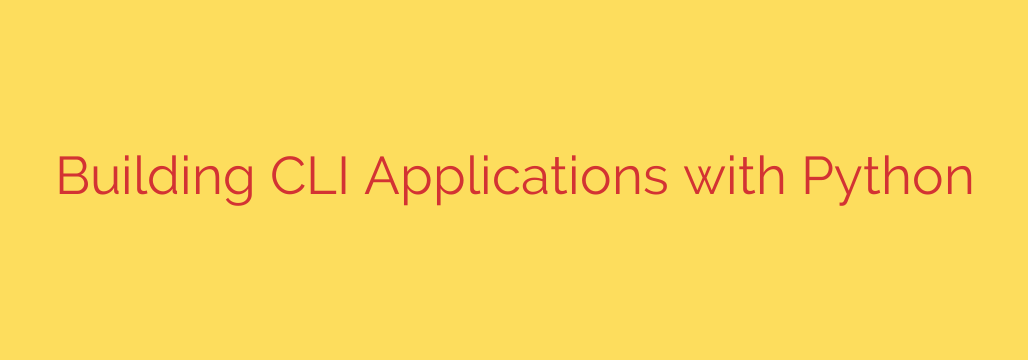
Building powerful and interactive command-line interface (CLI) applications using Python offers a streamlined way to automate tasks, build developer tools, and create utilities that run directly from the terminal. Python’s simplicity and rich ecosystem of libraries make it an ideal choice for this purpose, allowing developers to quickly get started and build sophisticated tools.
At the heart of most CLI applications is the need to process user input provided through the command line. This involves handling command-line arguments and options. Arguments are typically values required by the script, while options modify the script’s behavior and are often preceded by hyphens (- or --). Parsing these inputs correctly is crucial for your application to function as expected.
Python provides several ways to handle argument parsing. The built-in argparse module is a standard and highly recommended tool. It simplifies the process of defining what arguments and options your script expects, automatically generates help and usage messages, and handles validation. Using argparse, you define your arguments, specify their types, add help text, and the module takes care of parsing sys.argv.
Beyond argparse, several excellent third-party libraries further enhance the experience of building Python CLIs. Click is a popular choice known for its simplicity and powerful features like automatic help generation, arbitrary nesting of commands, and prompting for missing values. Typer, built on top of Starlette and Pydantic ideas, provides a very intuitive way to build CLIs by leveraging Python type hints, often requiring less boilerplate code than other libraries.
A well-structured CLI application is easy to use and maintain. Organizing your code into functions or classes, especially when dealing with multiple commands or complex logic, improves readability. Providing clear help messages for your application and its arguments is essential for user experience, allowing users to understand how to use your tool without needing external documentation.
When developing CLI tools, consider the user experience. Design intuitive argument names, provide helpful error messages, and think about how your application will be installed and run. Packaging your application correctly, perhaps using tools like setuptools or Poetry, makes it easy for others to install and use your CLI from anywhere on their system.
In summary, building CLI applications with Python is an accessible and highly effective approach. By leveraging built-in capabilities like argparse or exploring powerful libraries such as Click and Typer, developers can create robust, user-friendly tools that streamline workflows and automate processes directly from the command line. Focusing on proper argument parsing, clear structure, and helpful documentation ensures your CLI application is both powerful and easy to use.
Source: https://www.fosstechnix.com/develop-custom-cli-application-using-python/








